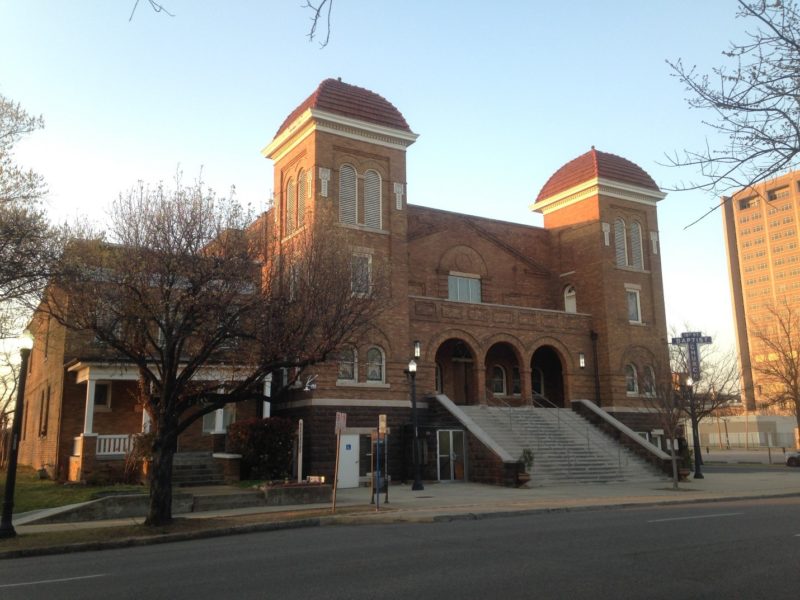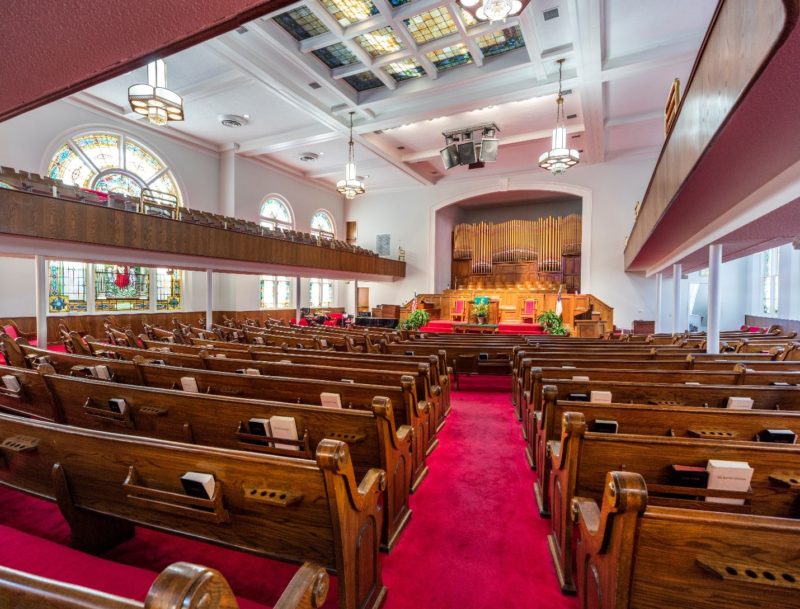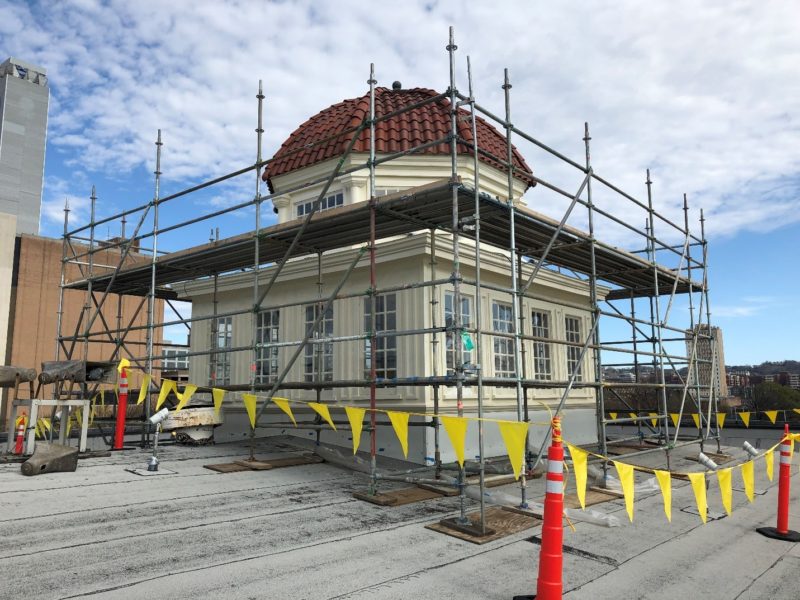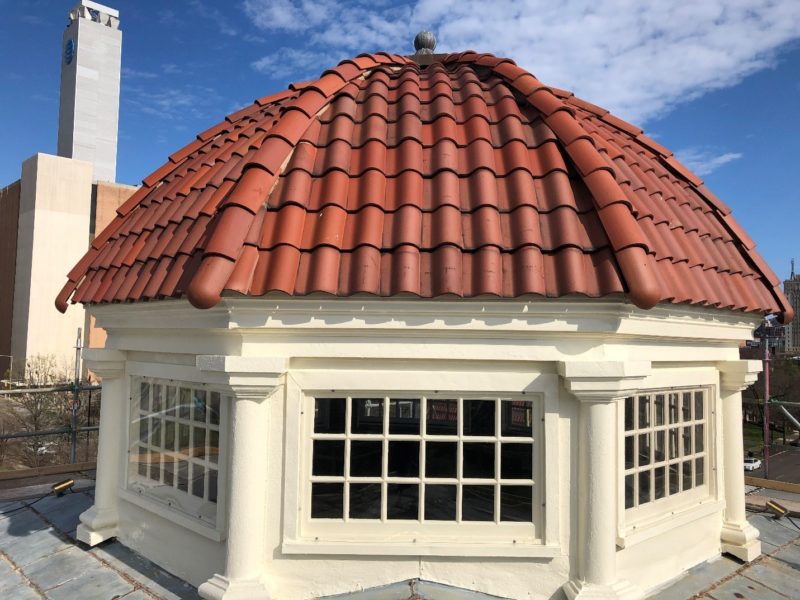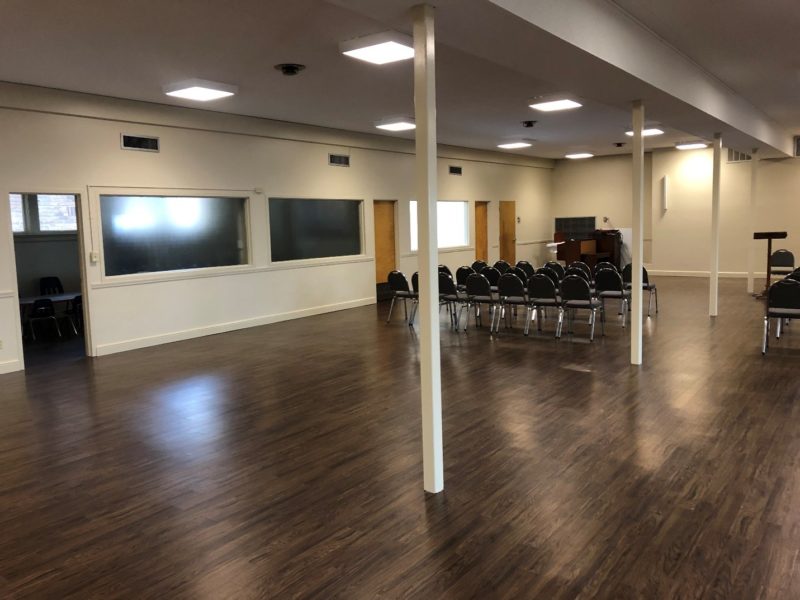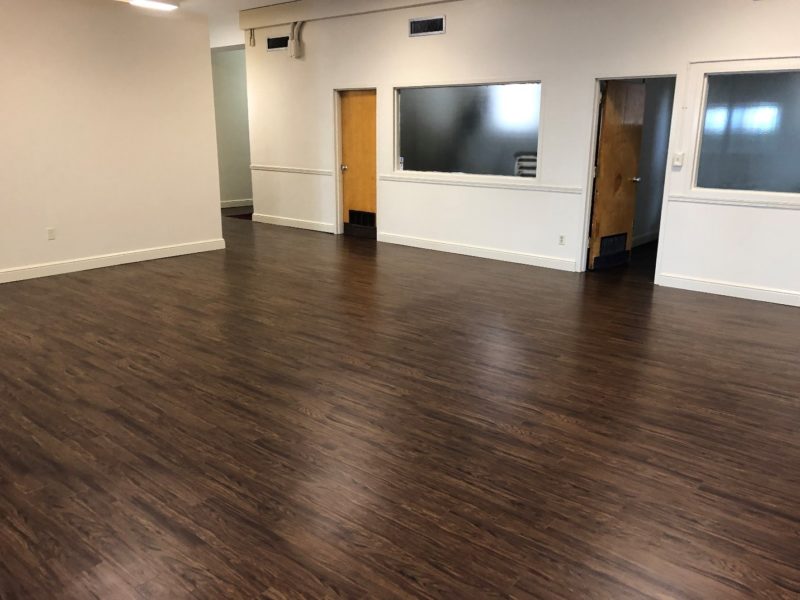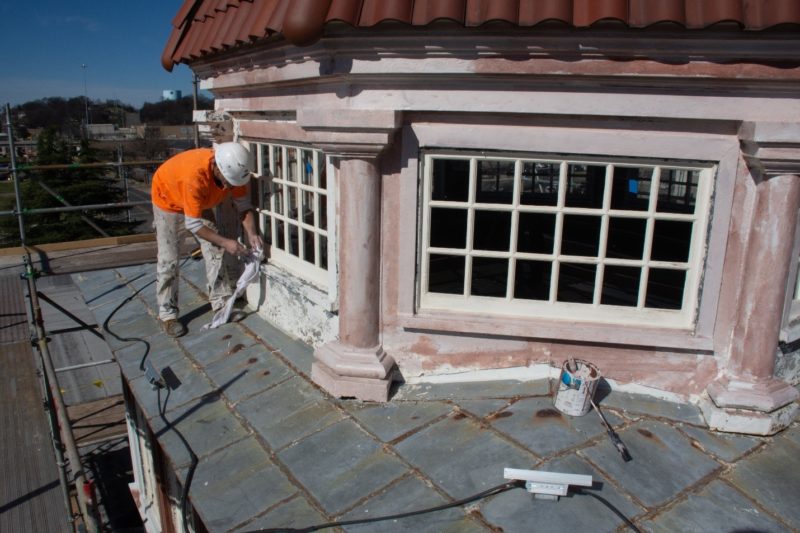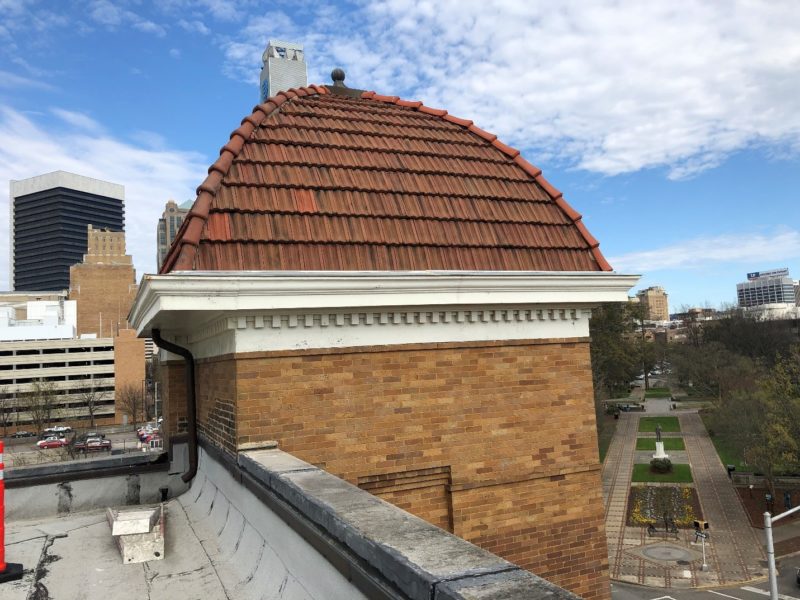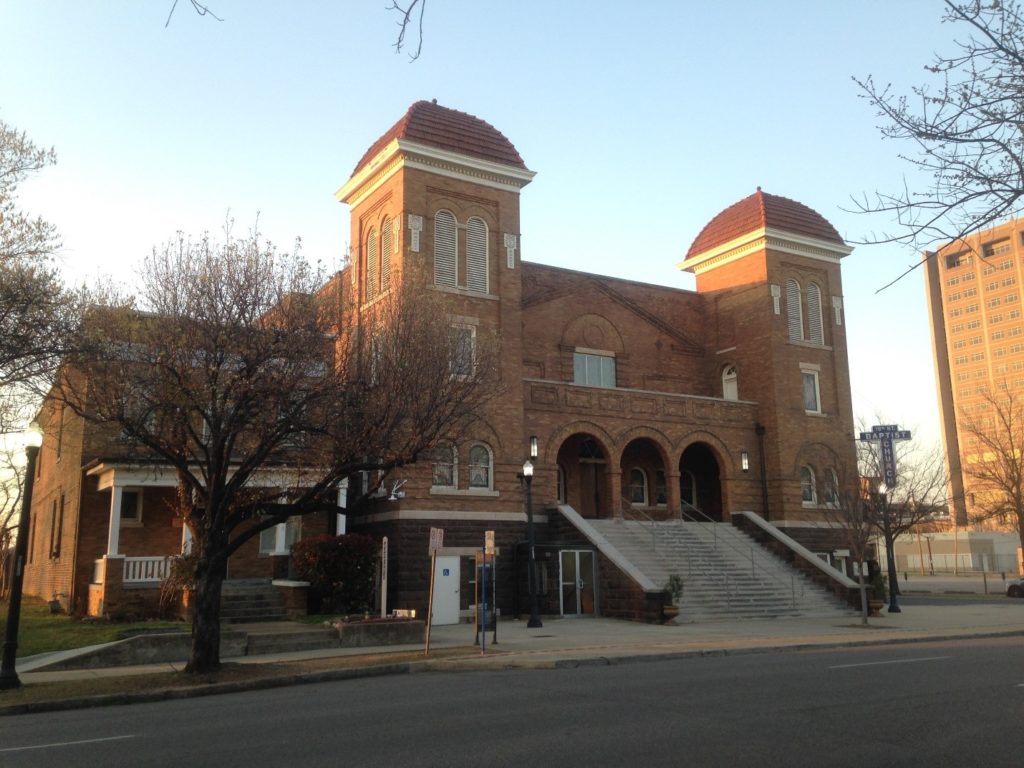
When you step into the doors of Sixteenth Street Baptist Church, you’re walking the line between the past and the present.
The church, which still has an active congregation of around 300 members, looks almost exactly like it did after it was rebuilt in 1963.
Funding from sources such as an African American Civil Rights grant and $150,000 won through the Partners in Preservation competition by the National Trust Main Street Fund has helped the church continue its five-year restoration plan, which helps it keep its National Historic Landmark designation.
“As we secure it, we’re trying to preserve it so we will have it for generations to come,” Ted Debro, chair of church trustees said. “We think it’s an important place, it’s an important location. We think it’s an importation story and message that is not only important now but will be important for generations and generations to come.”
Sixteenth Street Baptist Church was built in 1911 by a group of African Americans who had a few years earlier been ordered to raze their 1883 building because the steeple was too tall. Black architect Wallace A. Rayfield designed the church that is now known as a national Civil Rights icon.
“The church tells the story about how black folks struggled, particularly in Birmingham, since 1871,” said historian Malcolm Cammeron, who is working with the church on its restoration and renovation projects. “There’s been ingenuity in the process. We’ve done it through black political activism, we’ve done it through entrepreneurship and racial uplift…This space provides a sense of hope and history on how black people have been pushing back against the structures of white supremacy for the last 100-plus years that the church has been in existence.”
During Birmingham’s turbulent 1960s, Sixteenth Street Baptist Church was a venue for civil rights advocates’ mass meetings and demonstrations.
On Sunday, September 15, 1963, the church was bombed, killing four young girls: Addie Mae Collins, Denise McNair, Cynthia Wesley and Carole Robertson. The bombing marked a turning point for the Civil Rights movement happening all over the South at the time, with Birmingham being at the epicenter.
Now that work on the church’s cupola and the twin towers has completed the church’s preservation work, the basement is undergoing renovation to memorialize the girls who lost their lives there in a way that informs and moves 16th Street visitors.
Sixteenth Street is working on exhibit space centered around the clock that stopped at 10:22 a.m. on the day the bombing destroyed the basement and took four innocent lives.
The museum in that very basement will focus on four experiences—meeting the girls killed in the bombing, learning what was happening around them and led to the bombing, the Sunday School lesson that day and the aftermath of the bombing.
“Those worlds kind of collide at 10:22,” Historian David Currey from Encore, the company helping with the exhibit, said. “Something comes out of that that’s different and there’s a synthesis of those events. “
The space will be a state-of-the-art way to tell the complicated story of the church’s history smoothly and in a way that resonates with younger visitors, according to Cammeron, who’s involved with the process. “Sixteenth Street’s history is very much connected to places that millennials may be familiar with,” he said. “There’s a connection to Booker T. Washington, a connection to Tuskegee Institute, there’s a connection to larger Birmingham as well and some of the civil rights leaders that people would be familiar with.”
The exhibit is scheduled to be complete on the 56th anniversary of the bombing.
How the iconic bell towers & cupola were repaired
In November 2018, 16th Street Baptist Church was awarded a $150,000 grant following a monthlong voting competition. The $150,00 awarded went to repairing the cupola, the surrounding twin towers and the installation of protective glass on the outside of the church’s recently restored stained glass windows.
Work on the windows has been paused due to an architectual issue, but the cupola is complete.
The cupola is a two-tiered structure in the center of the building made with a wood frame and clad in pressed metal. it has 24 windows between the two tiers. The first tier is a square drum and the second tier is octagonal.
The copula’s roof, as well as the roof of the surrounding twin towers, is covered with terra cotta tiles specific to the 60s. Most of the original tile is still in place, but the repair project replaced the missing tile. Damaged wood framing was replaced, and the copula’s exterior was painted.
The cupola and tower work was part of the first phase of renovation, designed to both repair, preserve and restore the church back to its period of historical significance.
Related News
-
12 anchor businesses in Woodlawn's historic commercial district
Filed Under: Business-Proving, Front Page, Small Business, Woodlawn
The historic Woodlawn commercial district has been home to some exciting openings in the last year. These new concepts represent the evolution of Woodlawn businesses, providing us a glimpse at what the future holds for this special place. However, as the saying goes, Rome wasn’t built in a day – and neither was Woodlawn! That’s why we want to tip our hats and raise a glass to some of the businesses that have paved the way for further development and growth in Woodlawn.
-
A cautionary tale: Birmingham's historic losses
Filed Under: Developer, Downtown Birmingham, Front Page, Historic Preservation
In case you haven’t heard, May is National Historic Preservation Month, as so celebrated for years by the National Trust for Historic Preservation and the National Park Service. Here in Birmingham, a city rich in history and culture, this month-long celebration is not only a reminder to take stock of the historic treasures and charm we currently possess, but a time to mourn those we no longer have.
-
10 powerful examples of historic preservation in action
Filed Under: Downtown Birmingham, Filling Vacant Spaces, Front Page, Historic Preservation, Potential-Proving, Yaysayers
It’s easy to take for granted the historic gems we have here in Birmingham. Many beautiful, story-filled buildings dot the map of our city, their silhouettes adorning our skylines and their façades serving as the vibrant background to our everyday lives downtown. However, without attention, investment and a commitment by our community to prioritize these treasures, our historic buildings and the authentic character they give our city can disappear.
